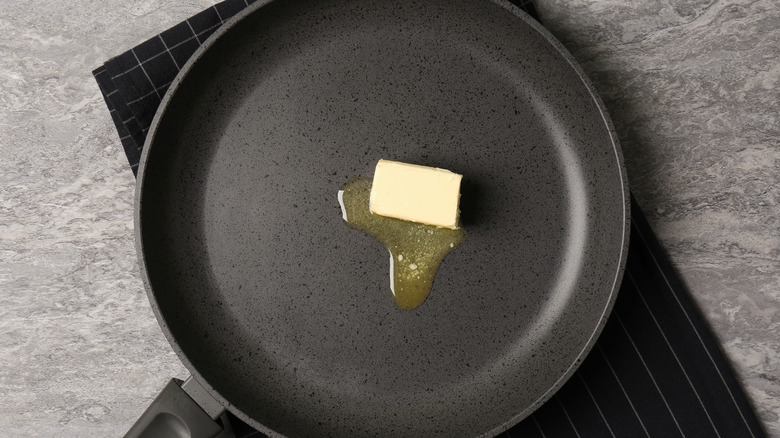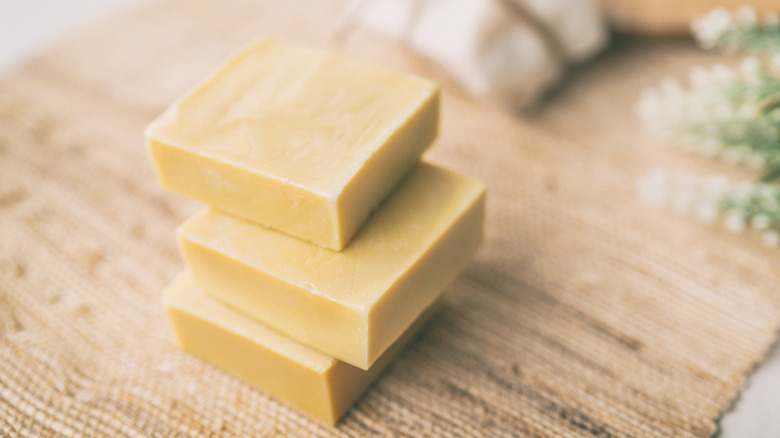Your Butter's Temperature Matters A Lot When Making A Pan Sauce
One of the best ways to make restaurant-quality dishes in your home kitchen is to make an incredible pan sauce. A pan sauce is exactly what it sounds like; a sauce made in the same pan in which meat or veggies were cooked. Anyone who's seared a steak or carmelized onions knows how delicious the little brown bits that are left behind taste. These are called the fond and are essential to creating a delicious sauce. The process is fairly simple, but there are a couple of important things to look out for, and one of these is the temperature of your butter.
If there's grease left from the meat you'll use that, if not you can add a touch of oil. Then add some aromatics like herbs, spices, or garlic. Cook to warm through but be careful not to burn the spices or garlic or they'll turn bitter, and then deglaze the pan with wine. Once the alcohol has cooked off, you add either stock or broth, allowing it to reduce until slightly thick. Now comes one of the most important parts: adding the butter. You might think that adding softened butter is the way to go, but for a pan sauce, you'll need cold butter straight from the fridge. The butter will thicken the sauce, but it will also add a richness that helps round it out and improve the overall flavor. Butter is a fat, which when emulsified in the sauce, helps make it more full-bodied.
Why does the butter have to be cold?
Unlike certain baking recipes, where butter should be softened, you'll need cold butter for a pan sauce. The main reason cold butter is needed is that it takes longer to melt, ensuring more even integration into the liquid. This means that the sauce doesn't break. Butter should also be added slowly and whisked thoroughly to ensure it emulsifies into the sauce. While there is no hard and fast rule about how much butter to add to your pan sauce, it's best to start with one of two slices, whisk it in, and taste it. If you prefer a richer sauce, add more butter, while less butter will result in a more glossy sauce.
Using cold butter also ensures that you don't wind up with a greasy sauce, which could happen if you use room temperature or melted butter. As with any cooking mishap, sometimes you can do all the right things and still end up with a broken sauce. If this happens, do not fear. A broken sauce essentially means the liquid has evaporated too much and the butter is no longer properly incorporated. If this happens, simply add some water and stir vigorously until the sauce comes back together to become rich and smooth.

